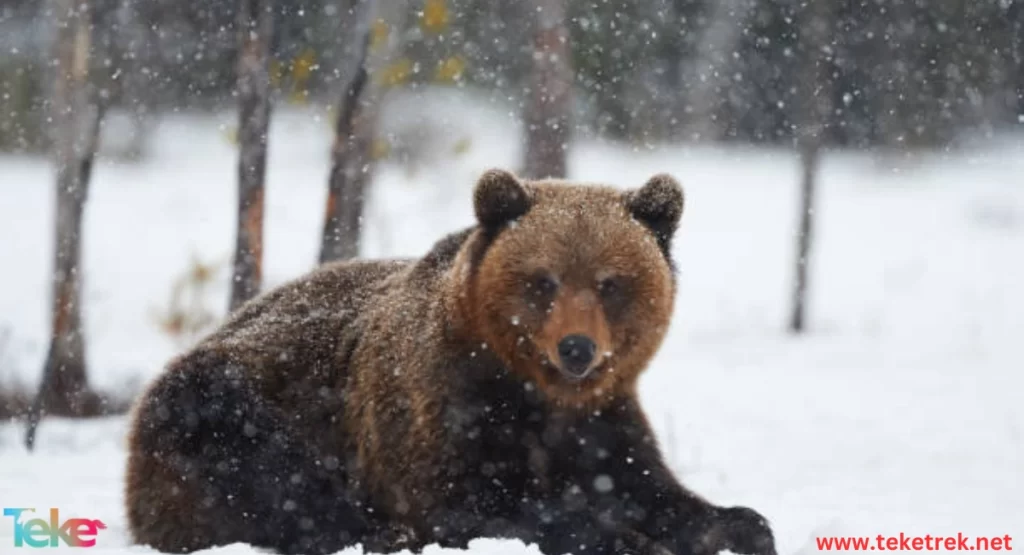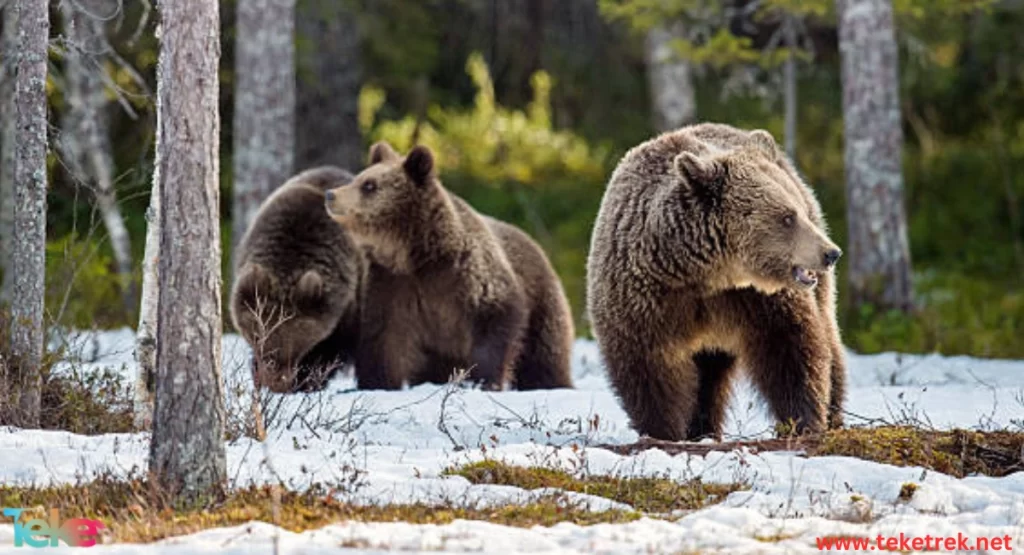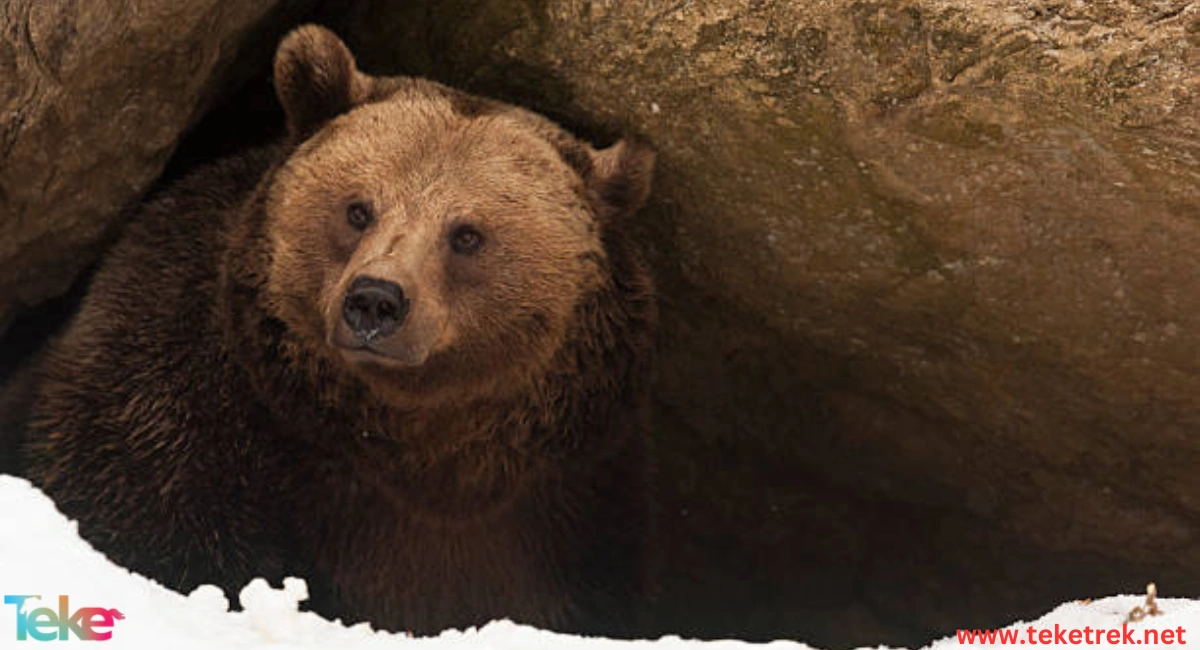Bears adapt in winter to live their lives in a state of hibernation away from cold climates after they have adapted either through their thick fur that keeps them warm or through layers of fat that act as a solid barrier that keeps their body temperature constant.
Bears are one of the largest and strongest land mammals living on Earth. They are distinguished by their majestic presence and amazing adaptation to the environments in which they live. In the winter, this species faces harsh conditions of low temperatures or lack of food sources.
Therefore, bears resort to hibernation as a basic strategy for survival. During this period, their physical functions decrease and their movement decreases significantly, which allows them to conserve energy and avoid difficult weather conditions, and from here we will begin our wild journey into the world of bears to learn about their way of life during the winter. Participate with us on this journey and learn about the style of a wild creature facing the cold winter.
Bears prepare for winter:
Bears’ preparations for winter are through their exploitation of suitable weather conditions by searching for food sources to store in the form of fat under their skin, in addition to building a burrow or shelter to protect them from harsh weather conditions during the winter. Therefore, we will provide a simplified explanation of these two cases as follows:
Fat storage: During the fall, bears begin to consume large amounts of food in order to prepare for hibernation. This process is called autumn immersion, as bears feed on various types of available foods, including berries, fish, meat, and plants, to increase the amount of fat in their bodies. Their bodies, as this stored fat is the main source of energy during the months of hibernation, as bears depend on these fats to meet their energy needs and survive without having to search for food.
Searching for shelter: Bears search for suitable sites to build their nests or burrows before the beginning of winter. These burrows are caves or holes under tree trunks or in the ground. Bears carefully prepare these places to be warm and protect them from the extreme cold. While they use plant materials such as leaves and grass to build nests inside burrows, this provides them with additional insulation against the extreme cold and thus ensures that the bears remain in a quiet and safe hibernation until the end of the cold winter.

https://teketrek.net/characteristics-and-features-of-the-manta-ray-and-interesting-facts-about-it/
How do bears live during hibernation?
When bears enter the winter season, which is characterized by harsh weather conditions of air, cold, etc., they resort to the winter hibernation stage after preparations, the most important of which is preparing a suitable place to spend the entire hibernation stage, while storing large amounts of fat under their skin, which will be a factor of food security for them during that stage. Some of its vital conditions also change, which are as follows:
Slowing down of vital processes: The vital processes in the body of bears decrease significantly during the hibernation phase, as the heart rate slows to about 8-10 beats per minute, compared to 60-80 beats per minute under normal conditions. In addition, the body temperature decreases by a few degrees. To conserve energy.
Consumption of stored energy: Bears rely on fat stored in their bodies to provide energy during hibernation, which was provided by consuming large amounts of food. Bears use this fat to meet their basic energy needs without the need to eat food or water for a period that may reach several months.
How do bears avoid muscle loss?
Bears maintain their muscle mass during hibernation thanks to a unique biological process in which their bodies utilize hydrolyzed proteins from stored fat to fuel their muscles and maintain their mass. This adaptation helps bears remain strong and ready to return to full activity once the hibernation period ends and appropriate environmental conditions return.
https://teketrek.net/the-honey-bee/
Types of bears and their winter behavior:
The animal kingdom contains many types of bears, which differ in the color they came to according to the environment in which they live. They may also differ among themselves in how they deal with the winter season, so we will now present to you 3 types of them with a simple explanation of how they deal with the cold season, as follows:
Brown bears
Brown bears live in diverse environments, including mountain forests and polar tundra. These bears enter a deep hibernation inside burrows or caves during the winter, where they slow down their vital processes in order to save energy, and rely on the fat stored in their bodies to survive during this period. By interacting a little with the surrounding environment during situations of extreme necessity.
Black bears:
Black bears adapt differently from brown bears during the winter, as these bears live in diverse forests and can enter into a less deep hibernation compared to brown bears. This indicates that black bears may wake up periodically during the winter to search for food if appropriate conditions are available. So.
polar bears:
Polar bears do not go into complete hibernation, unlike brown and black bears. Polar bears live in the Arctic regions, which requires them to remain active to constantly search for food. Polar bears adapt to extreme cold and hunt in icy conditions, which makes them need continuous energy to survive. alive. Therefore, polar bears rely on constantly eating instead of going into a long hibernation.

Hibernation and risks:
During the winter hibernation phase, bears are exposed to many risks and threats, which are represented by threats during the hibernation phase, such as the collapse of burrows, which is one of the biggest dangers, as it can lead to the bears being crushed or their shelter destroyed, forcing them to go out and search for a new shelter in harsh weather conditions. In addition, bears can be attacked by other animals that may try to break into their burrows while they are searching for a safe place or food.
Climate change and its impact are also considered one of the most important risks and challenges that bears can be exposed to during their winter hibernation, as higher temperatures can lead to shorter periods of hibernation, which means that bears need more energy and food to survive. Changes in the environment, such as less snow or early thaw, affect bears’ refuge and their ability to find suitable shelter for hibernation. This makes environmental conditions less stable, which increases the challenges bears face in their ability to survive during periods of hibernation.
In conclusion, bears adapt in winter to face the cold season by storing fat and reducing vital processes, and this helps them overcome the long and harsh winter periods with the least amount of energy needed for them to survive. Climate changes also play a major challenge that bears face, which works to Loss of habitats necessary for them, so we must protect the natural environments that these animals depend on to ensure their continued existence in nature.





